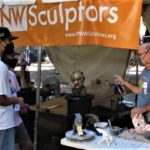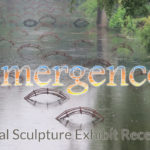Join us on
June 8th and 9th
Volunteer and Raku the masks we made on May 25th!
Sculptors share knowledge and resources
Join the PNWS Sculpture Conversation – 7pm this Wednesday! As always, feel free to bring current projects or ideas to share, or just follow the creative thread that reveals itself when like-minded sculptors gather. Alisa Looney will be your host on Teams. Wednesday, at 7pm Microsoft Teams meeting Join on your computer, mobile app or room device. Click […]

Our members have become an annual attraction at Art in the Pearl. This year included a few new faces. Demonstrators included Tony Furtado, Russ Ford, Phil Seder, Jerry Woodbury, Dave Cole and organizer Andy Kennedy. Also participating as an exhibitor, Chas Martin. Thanks to everyone who demonstrated sculpting. I’m certain Art in the Pearl will […]

Pacific Northwest Sculptors hosted a virtual for the “Emergence” online sculpture exhibit. View the recorded event. The reception celebrated the first online sculpture exhibit presented by the group. Entrants from 32 states submitted over 500 works. Author, critic and curator, Richard Speer was the juror for the exhibit. He shared his observations and discussed his […]